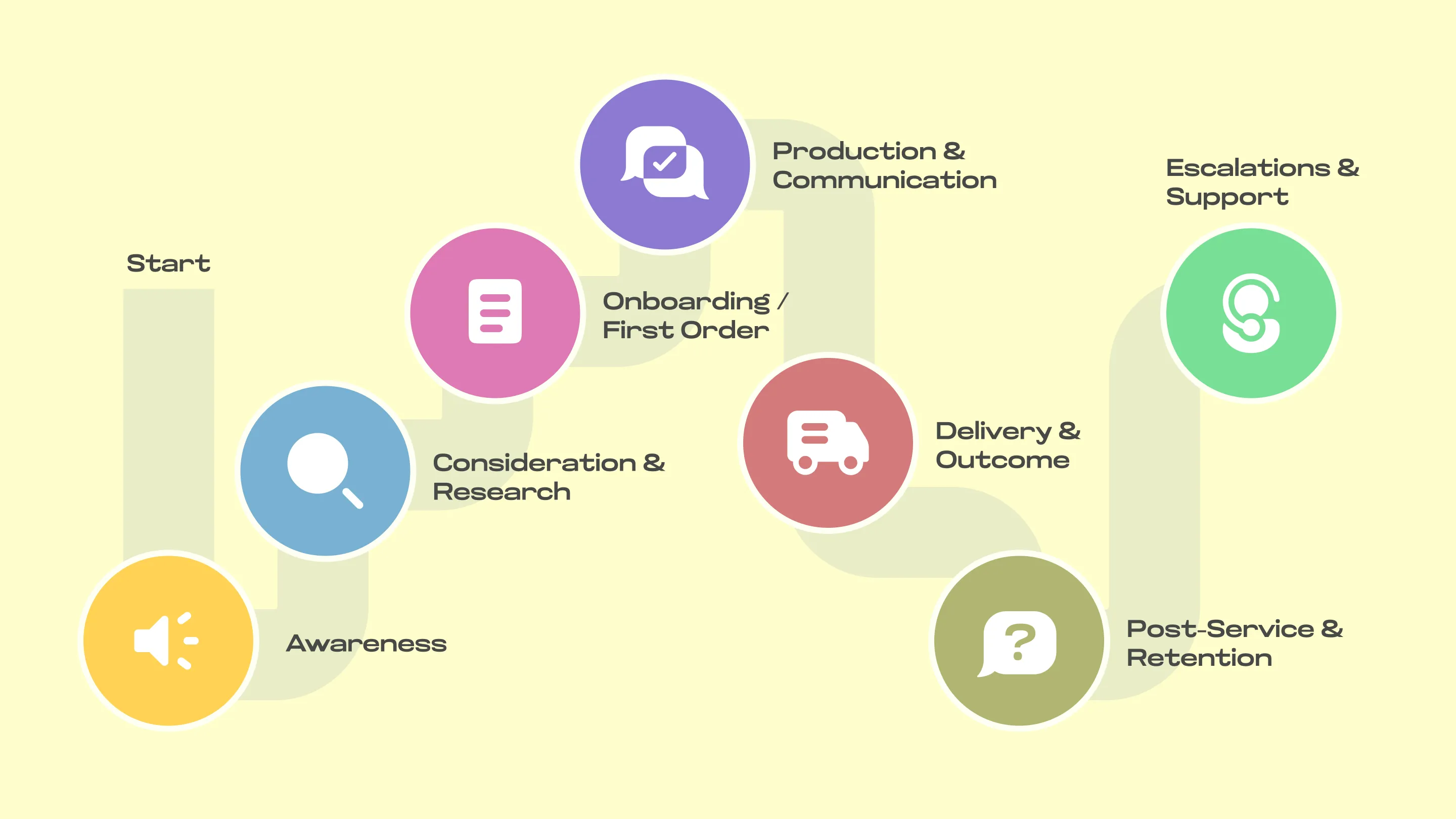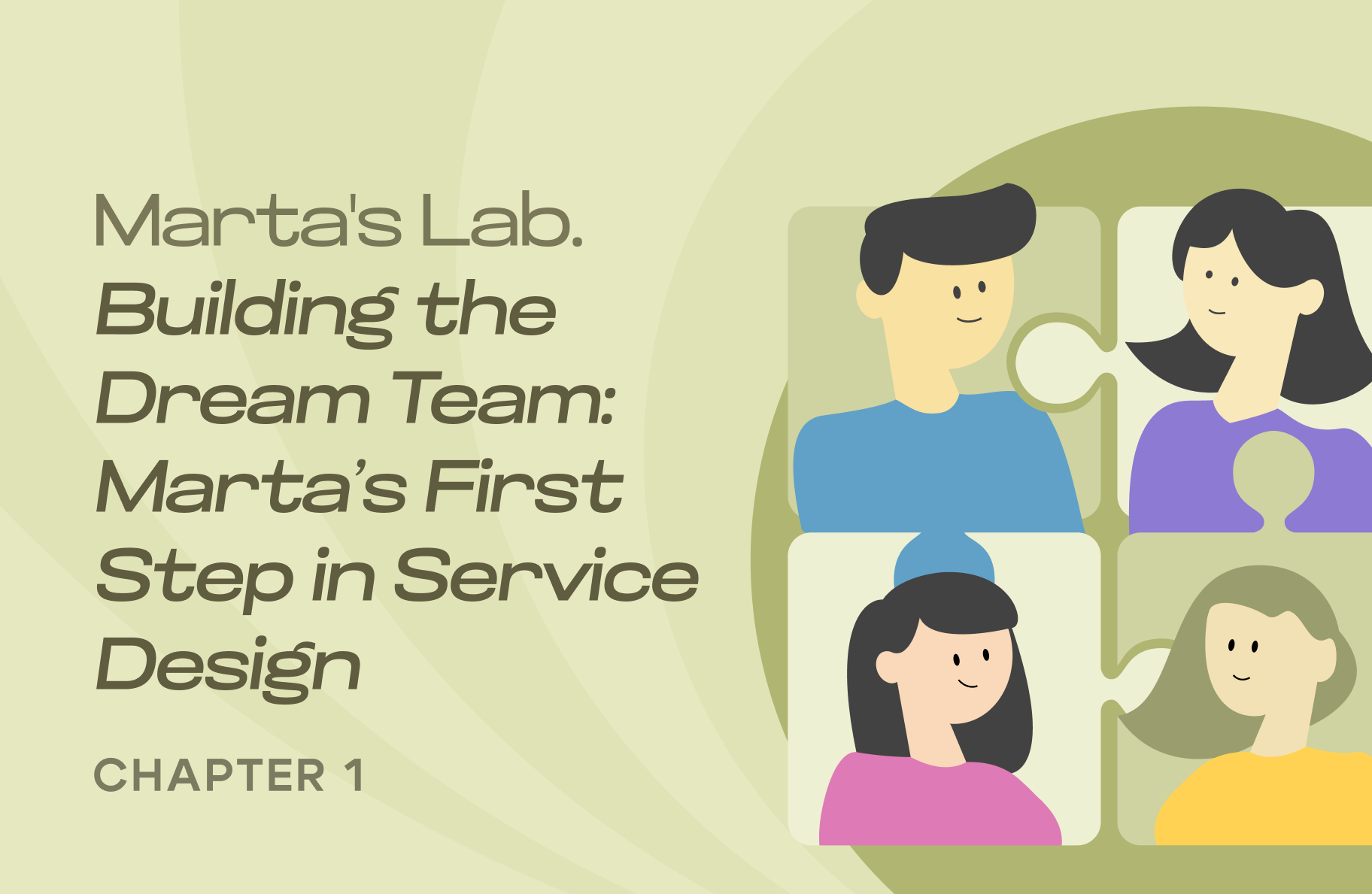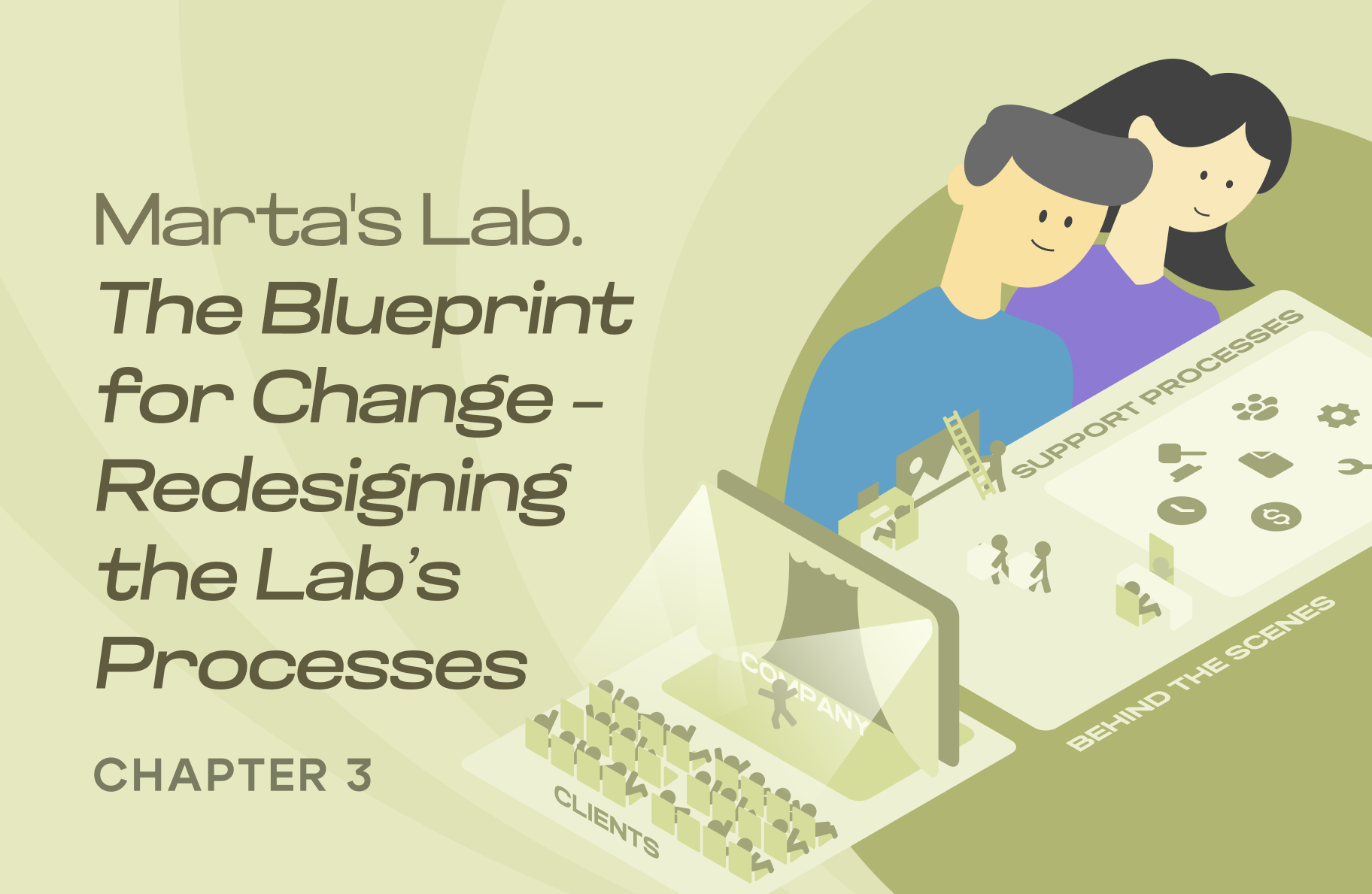
Welcome to the Second Chapter of Marta’s Journey
A story about seeing through the eyes of others and the power of empathy in service design.
After assembling her service design team in the first chapter, Marta, the owner of a bustling dental lab, is ready to take her next steps toward change. Her business faces challenges many can relate to: balancing growing client demands, fixing operational inefficiencies, and staying competitive. With her newly formed team and service design consultant, Levi, she’s about to dive into the core of what truly matters: understanding her clients.
In this chapter, the spotlight is on a crucial step in the process: mapping the journey of her clients, the dentists who rely on her lab every day. With Levi’s guidance, Marta and her team will uncover insights, frustrations, and opportunities that have been hidden in plain sight.
Stay tuned as Marta learns to see her lab not just as a business but as a key player in her clients’ success stories — and let her journey inspire your own business transformation.
The Journey Begins: Seeing Through Clients' Eyes
After assembling her diverse team and defining their goals in the kickoff session, Marta and Levi dove straight into one of service design’s most transformative tools: customer journey mapping.
Levi
This is where the magic begins. We’re going to map out every step your clients go through when working with your lab, from the moment they think about placing an order to the follow-up after delivery.
Marta’s team — including Yasmin, Tom, and Isabel — hesitated at first, unsure of how to start. Levi encouraged them:
Levi
Don’t overthink it. Just think about the dentists and their experiences. Where does it start?
The whiteboard quickly filled with sticky notes as they broke the process into stages:
- Initial Contact: When dentists reach out to place an order.
- Order Submission: The process of filling out forms and providing specifications.
- Order Fulfillment: The behind-the-scenes work in the lab to produce the restorations.
- Delivery Day: When the final product reaches the dentist’s clinic.
- Post-Delivery: The feedback loop—or lack thereof.
Levi
Now comes the hard part. We need to step into their shoes and think about what they’re feeling at each stage. What makes them happy? What frustrates them? What’s missing?
Hearing the Client’s Voice: Refining the Map Through Interviews
To move beyond assumptions, Levi suggested they speak directly with their clients.
Levi
The map is only as accurate as the insights you gather. Let’s hear it from the people living it.
Marta identified five dentists who represented different segments of her client base:
- Dr. Kaminski: A long-time client who valued craftsmanship but often complained about delays.
- Dr. Nowak: A tech-savvy dentist who struggled with the lab’s lack of digital integration.
- Dr. Ellis: A pediatric dentist who placed custom, child-focused orders.
- Dr. Robinson: A small-town dentist known for direct feedback.
- Dr. Ward: A perfectionist who demanded flawless restorations but had become distant.
These interviews revealed a wealth of insights, opening Marta’s eyes to issues she hadn’t fully appreciated:
- Communication Gaps: Dentists wanted clear, proactive updates about their orders.
- Complex Processes: The order submission system was unintuitive, often leading to mistakes.
- Reliability Issues: Late deliveries disrupted their schedules and hurt their reputations.
- Lack of Collaboration: Dentists felt like they were sending orders “into a void” rather than partnering with the lab.
Marta listened closely as her clients shared not just their frustrations but their hopes.

Dr. Robinson
I just want to feel like we’re on the same team.
The Map Comes to Life
Back at the lab, Levi helped the team refine their journey map with these insights. Sticky notes turned into stories, and each pain point became a call to action.
- The Beginning: Dentists felt stressed by complicated forms and unclear instructions, leading to repeated follow-ups.
- Communication Gaps: Updates were inconsistent, leaving clients anxious about their orders.
- Delivery Day: Errors or delays created a cascade of problems, including rescheduled appointments and dissatisfied patients.
- Post-Delivery: Dentists rarely shared feedback, leaving the lab in the dark about its performance.
As they stepped back to view the completed map, Marta felt a wave of clarity.
Marta
We’re not just making dental restorations. We’re shaping how dentists feel about their work — and their patients’ smiles.
Levi
That’s the essence of service design. It’s about the experience as much as the product.
The Turning Point
The exercise marked a turning point for Marta and her team. They no longer saw themselves as just technicians in a lab, as they were part of a larger ecosystem, connected to the dentists and their patients.
Marta
We’ve got work to do. But for the first time, I feel like we know where to start.
Order a Workshop
Designing a service is a long journey, but starting with a workshop is a great way to explore the benefits of service design without a major commitment.
We offer discovery workshops and focused sessions that allow you to identify key pain points, map out customer journeys, or prototype initial solutions.
Schedule a free consultation Schedule a free consultationWhat’s Next?
With their customer journey map and client insights in hand, Marta’s team is ready to tackle the next phase of their transformation: building a service blueprint to redesign their processes and tools.
Follow Marta’s journey in the next chapter, where we dive into the service blueprint for change. Don’t miss the strategies and solutions that could inspire your own business transformation.
Subscribe in the form below to stay updated.




